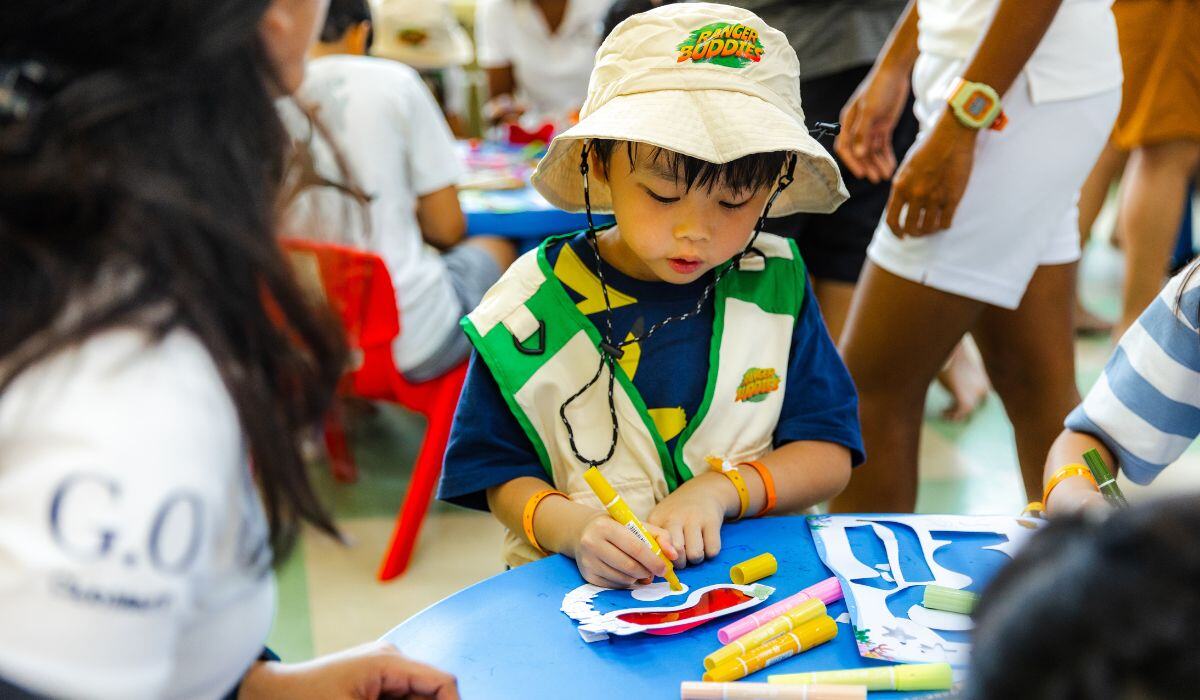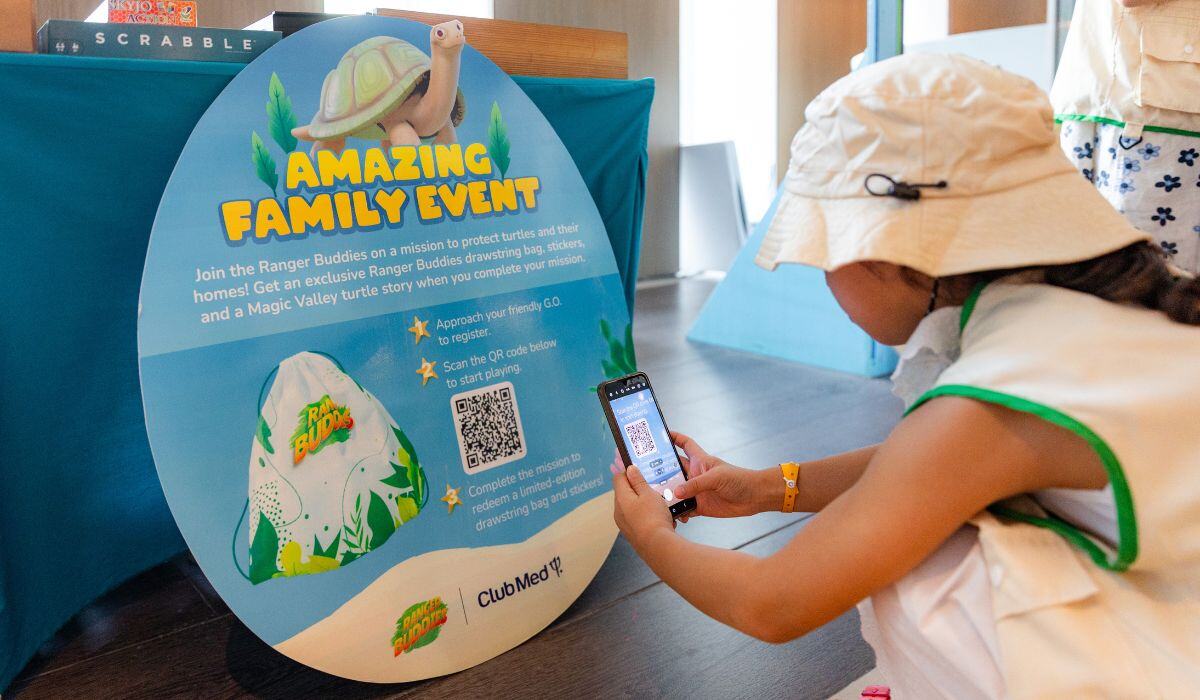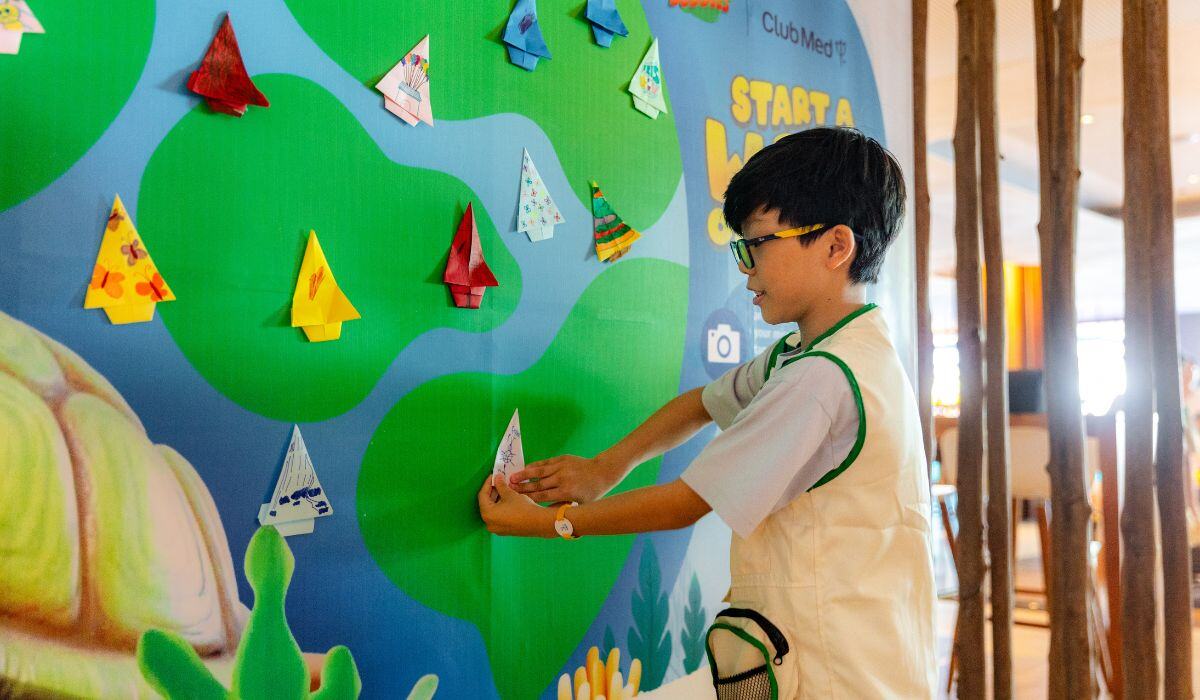Future-ready kids: 7 essential strengths for a changing world
In a world of constant change, preparing our children for the future starts with building character.
Imagine stepping into the workforce only to find that the job you trained for no longer exists because AI has taken over. What strengths will your child need to navigate this reality and carve out new opportunities?
Our children will face a fast-evolving world, driven by rapid AI advancements, climate challenges and societal shifts. Beyond academic skills, they will need a strong foundation of character strengths to thrive – strengths like curiosity to explore new ideas, adaptability to adjust to change and grit to persevere through adversity. These qualities are key to future-readiness, helping children become resilient problem-solvers who can tackle any challenge – even those we can't yet imagine.
In this article, we introduce the seven essential character strengths that will prepare children for an unpredictable world. Forming the acronym C.O.U.R.A.G.E., these seven socio-emotional strengths are at the heart of what we champion in our Ranger Buddies and underpin all our Ranger Buddies missions. We'll also share a quick tip for each strength to help you foster these qualities in your child.
 CURIOUS: Being passionate about discovery
CURIOUS: Being passionate about discovery
Curiosity is that spark in your child’s eyes when they ask, “Why is the sky blue?” or “How do birds fly?” It’s the natural urge to explore, ask questions and uncover the unknown.
As Bernard Baruch, renowned financier and presidential advisor, once said, “Millions saw the apple fall, but only Newton asked why.” Curiosity is the reason we have developed our knowledge of the world, and each new discovery lays a path to the next.
But what's powerful about curiosity is not just that it helps children gain knowledge. It’s about the joy of discovery.
When children are curious, they are naturally driven to think critically and expand their understanding – seeing learning not as a chore, but as play. Research shows that curiosity triggers brain chemistry that makes learning easier and more memorable[1]. It’s like giving their brain a workout while having fun – nurturing a lifelong love for learning and innovation.
Quick tip: Encourage curiosity in your child by showing interest in their questions, even if they seem endless. Instead of just giving answers, ask, “What do you think?” or “How could we find out?”. This helps your child learn how to seek answers and enjoy the process of discovery.
OPTIMISTIC: The power of perspective
Optimism is like having a pair of glasses that help your child see the bright side of things, even when life throws challenges their way. It’s the belief that tough times can bring valuable lessons. Optimistic children don’t just hope for the best, they also believe they can make it happen.
Psychologist Martin Seligman reveals in his seminal work, Learned Optimism, that optimism helps children bounce back from difficulties, try again after setbacks and keep striving towards their goals[2]. It’s not just something they are born with; it’s a mindset that can be nurtured and developed. By practicing optimistic thinking, children can learn to approach challenges with confidence and focus on what they can control.
Quick tip: When your child faces a challenge, help them reframe the situation by asking, “What’s something positive you can take from this?” or “What could you do differently next time?”. Celebrate their efforts, not just their results, to show them that setbacks are stepping stones to success. This encourages a hopeful, can-do attitude that they’ll carry forward.
UNDAUNTED: Embracing challenges head-on
Being undaunted is about having the courage to keep going, even when the path gets tough. Whether it’s learning to ride a bike after a fall, speaking up for a friend or tackling a tricky math problem, being undaunted helps children face challenges with determination, instead of giving up at the first sign of difficulty.
 Courage comes in many forms, not limited to[3]:
Courage comes in many forms, not limited to[3]:
- physical bravery, like standing up after a tumble;
- psychological bravery, like facing a fear of failure; or
- moral bravery, like standing up for what is right.
Each time your child chooses to face a challenge, no matter how small, they strengthen their ability to take on even bigger ones. Over time, these moments create a powerful feedback loop. Overcoming a challenge leads to success, which builds confidence, and that confidence encourages even greater courage and determination to face future challenges[4].
Quick tip: When your child is hesitant about trying something new, remind them of a time they faced a challenge and succeeded. Say, “Remember when you thought you couldn’t do [that tough thing], but you did? You’ve got this!” Celebrate their efforts and bravery, even if they don’t get it perfect. It’s the trying that matters most.
RESOURCEFUL: The skill of finding a way through
Being resourceful means being able to think creatively and critically to solve problems. Whether it’s finding a new way to fix a broken toy, thinking up a creative solution for a school project, or figuring out how to resolve a disagreement with a friend, resourceful children learn to trust their own abilities and think independently. It’s a life skill that builds confidence and helps them handle challenges that come their way.
 Resourcefulness involves making connections – a central component of learning[5] – helping children to think creatively and adapt when things don’t go as planned. When your child is resourceful, they don’t see obstacles. Instead, they look for new ways to tackle a problem, or use what they have to make things work.
Resourcefulness involves making connections – a central component of learning[5] – helping children to think creatively and adapt when things don’t go as planned. When your child is resourceful, they don’t see obstacles. Instead, they look for new ways to tackle a problem, or use what they have to make things work.
In the Institute of Mental Health (IMH)’s Colours of the Mind survey, they found that one of the characteristics for mental well-being in children was positive functioning, or the belief they can solve problems. Children with this belief value themselves, are able to learn well, make good decisions, and adapt to different situations in school and at home.
Quick tip: Encourage resourcefulness by letting your children solve problems on their own before stepping in. If they’re stuck, ask open-ended questions like, “What else could you try?” or “What would happen if you did it this way?”. Celebrate their efforts and ideas, even if their solution doesn’t work perfectly. It’s the trying and thinking creatively that matters most.
ADAPTABLE: Thriving through change
Adaptability is the skill that helps children stay steady in a world that’s constantly shifting. It’s about being open to new ideas, embracing change and trying different ways of doing things. Adaptable children don’t get stuck when things don’t go as planned. They adjust, learn and grow from the experience.
Your child is growing up in an unpredictable world, so being adaptable is essential. It’s closely tied to the idea of a growth mindset, the belief that we can improve and develop with effort. Children who are adaptable enjoy tackling challenges, discovering new solutions and learning new skills[6].
Quick tip: Help your child build adaptability by modelling a positive attitude towards change. When something unexpected happens, say, “Let’s figure out how we can make this work.” Encourage them to try new activities, meet new people, or think of different ways to approach a problem.

GRITTY: The determination to keep going
Grit is what keeps a child working towards their goal despite challenges. Whether it’s mastering a musical instrument, excelling at a sport or working hard in school to achieve a goal, grit fuels their commitment to keep going.
In her book Grit: The Power of Passion and Perseverance and her groundbreaking TED Talk[7], Duckworth discovered that grit predicts achievement in really challenging and personally meaningful contexts. While talent and luck matter to success, in the long run, grit may matter at least as much, if not more.
Tough’s findings in 2012 further support this, showing that grit is a stronger predictor of success than talent or intelligence alone. It’s not about being the smartest or most gifted; it’s about having the determination to stick with something meaningful over time. Grit helps children push through setbacks, overcome self-doubt and stay focused on the bigger picture.
Quick tip: Encourage grit by helping your child set long-term goals that excite them. Break these goals into smaller, manageable steps and celebrate their progress along the way. When they face obstacles, remind them of how far they’ve already come and why their goal matters to them.
EMPATHETIC: Understanding and caring for others
Empathy is the ability to step into someone else’s shoes, truly understand how they’re feeling and show them that you care. In the words of Professor Brené Brown[8], empathy involves four key components:

- taking someone’s perspective,
- avoiding judgment,
- connecting with emotions you’ve also felt, and
- communicating your understanding in a way that validates their feelings.
Empathy makes people more likely to care for others, help those in need and find creative ways to solve problems that benefit the wider community. In a future where global challenges require collective action, empathy will be more important than ever.
While some children naturally have a more empathetic personality, empathy can be modelled and nurtured over time[9]. Empathy is vital for children’s emotional health and their ability to build strong, meaningful relationships. It helps them connect with others, understand different points of view, and express their own emotions in a healthy way. Empathetic children are less likely to engage in harmful behaviours, like bullying[10], because they can appreciate the impact of their actions on others.
By cultivating empathy, we prepare our kids to not only thrive in their own lives but also contribute to a more compassionate and connected world.
Quick tip: Model empathy by showing your child how to understand and care about others. When they encounter someone upset, ask, “How do you think they’re feeling? What could we do to help?”. Showing kindness in everyday moments helps them see the power of empathy in action.
Building character, building future-ready kids
By nurturing these qualities in our children, we’re not just preparing them for the next test or school year; we’re preparing them for a future full of opportunities and challenges. Let’s guide them to grow into resilient, confident and compassionate individuals, ready to make their mark on the world.
The C.O.U.R.A.G.E. strengths are at the heart of what makes a Ranger Buddy, and are built into all our Ranger Buddies missions. Check out what's on today!
REVIEWED BY DR JACQUELINE CHUNG
References
[1]Cell Press. (2014, October 2). How curiosity changes the brain to enhance learning. ScienceDaily. Retrieved from https://www.sciencedaily.com/releases/2014/10/141002123631.htm
[2]Psychology Today. (2024). The optimistic parent. Beyond School Walls. Retrieved from https://www.psychologytoday.com/us/blog/beyond-school-walls/202409/the-optimistic-parent
[3]Rate, C., Clarke, J., & Lindsay, D. (2007). Implicit theories of courage. The Journal of Positive Psychology, 2(2), 80–98. https://doi.org/10.1080/17439760701228755
[4]Mind in the Making. (n.d.). Challenges. Retrieved from https://www.mindinthemaking.org/challenges
[5]Mind in the Making. (n.d.). Making connections. Retrieved from https://www.mindinthemaking.org/making-connections
[6]Yeager, D. S., & Dweck, C. S. (2012). Mindsets that promote resilience: When students believe that personal characteristics can be developed. Educational Psychologist, 47(4), 302–314. https://doi.org/10.1080/00461520.2012.722805
[7]Duckworth, A. L. (2016). Grit: The power of passion and perseverance. New York: Simon and Schuster.
[8]Brown, B. (2013, February 8). The power of vulnerability [Video]. YouTube. Retrieved from https://www.youtube.com/watch?v=1Evwgu369Jw
[9]Psychology Today. (2019). How children develop empathy. Smart Parenting Smarter Kids. Retrieved from https://www.psychologytoday.com/sg/blog/smart-parenting-smarter-kids/201905/how-children-develop-empathy
[10]Greater Good Science Center. (n.d.). The wisdom of babies. Greater Good Magazine. Retrieved from https://greatergood.berkeley.edu/article/item/wisdom_of_babies




